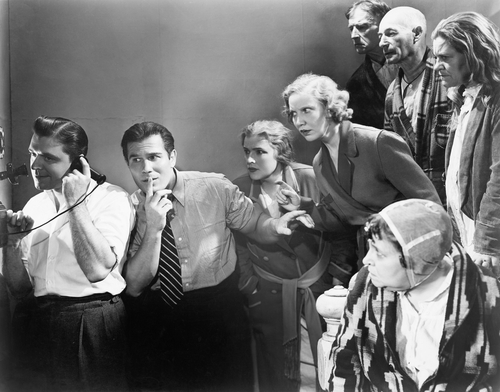Who We Call and Why in Uncertain Situations
This is one of our free-to-access content pieces. To gain access to all Ideas for Leaders content please Log In Here or if you are not already a Subscriber then Subscribe Here.

When facing uncertain situations of threat or opportunity, people will call on their contacts to help them meet the threat or take advantage of the opportunity. New research shows that how many contacts they call can be influenced by such factors as their rank in the organization, whether they have an internal or external locus of control, and the type of threat or opportunity that the uncertainty represents.
Uncertainty — such as a coming organizational restructuring, a new CEO brought in to turn around the company, a competitor’s new product or new technology that could derail the company’s market position, an impending sale or merger — can represent a threat or an opportunity. The immediate response to uncertainty usually involves 1) finding more information — What does this mean to me? What is rumour and what is fact? What is the potential scale and scope of the changes? — and 2) finding ways to cope with the emotional consequences of the uncertainty.
…A series of illuminating findings about how people react during times of change…
Both of these responses require people to turn to their network of contacts in the organization who can shed light on the situation and also offer emotional support. University of California Professor Sameer Srivastava used two experimental studies, one involving nearly 160 senior leaders in a health care company and another involving 130 employees from all levels in another company, to explore the “instrumental” network interaction (finding information) and “expressive” network interaction (seeking emotional support) that occurred in times of uncertainty.
The first step for Srivastava was to break down the concept of uncertainty into two dimensions. The first dimension involves whether the uncertainty represents a potential gain or a loss. Some might see the restructuring of the organization as an opportunity to move into a more interesting position, for example. For others, the restructuring might mean the loss of a job.
The second dimension of uncertainty is control/loss of control — i.e., whether the person feels he or she is losing control of a situation or, on the other hand, has some control over what happens. A new CEO could represent for one person the opportunity to make a new start with a new boss, and leave the conflicts with the old boss behind. Another person might focus on the lack of knowledge about the new CEO’s personalities and priorities compared to the ‘devil-you- know’ situation with the old CEO.
Using detailed surveys to the participants in the two companies — each participant was randomly assigned one of the four dimensions — Srivastava compared how many contacts they would connect with in light of a hypothetical uncertain situation with which they were presented. The surveys not only provided the rank of the participant in the organization (their place in the hierarchy) but also their ‘locus of control’ — whether people believe they can control what happens in their lives (internal locus) or believe that outside factors and people have control (external locus).
Analysing the collected data led to a series of illuminating findings about how people react during times of change that represent a threat or an opportunity:
On the personal development front, this research can be a wake-up call. As a manager or employee, a tumultuous period of change can be frightening. Information is vital not just to know what is happening, but also to know which steps to take to ensure the most successful outcome for you.
Don’t let the wrong factors undermine your efforts. For example, don’t let your external locus of control reduce the number of people you contact. And if there is some opportunity in the change, call as many contacts as possible to take advantage of that opportunity.
The research also has implications for managerial action. Specifically, many managers and executives may be tempted to downplay the threat or danger of an impending significant change. This ‘sugar-coating’ may seem to be a virtuous effort to calm fears, but may, in fact, be sabotaging employees’ efforts to safeguard their interests. With the threat of loss diminished, employees are less motivated (as the research shows) to gather the information they need to take the necessary steps for their careers. In your communications about the change, be truthful about both the opportunities and the threats that the change represents. This will give your employees a fighting chance to meet the threat... or opportunity.

Ideas for Leaders is a free-to-access site. If you enjoy our content and find it valuable, please consider subscribing to our Developing Leaders Quarterly publication, this presents academic, business and consultant perspectives on leadership issues in a beautifully produced, small volume delivered to your desk four times a year.

For the less than the price of a coffee a week you can read over 650 summaries of research that cost universities over $1 billion to produce.
Use our Ideas to:
Speak to us on how else you can leverage this content to benefit your organization. info@ideasforleaders.com